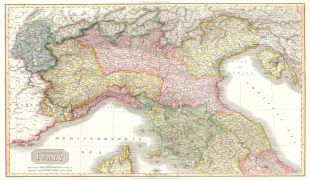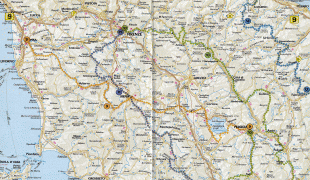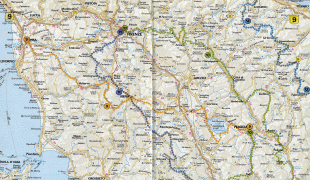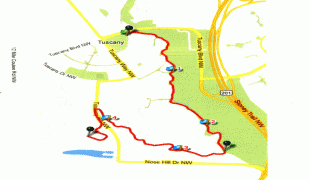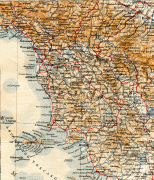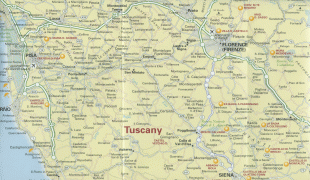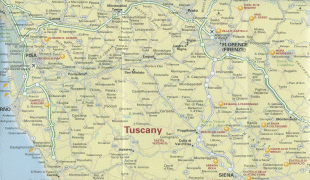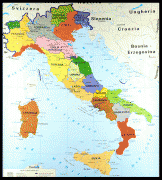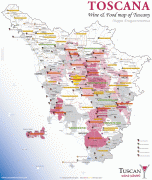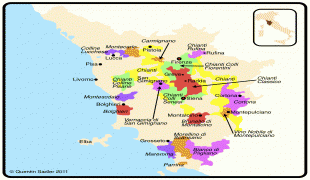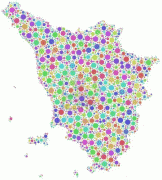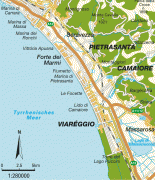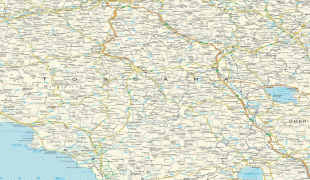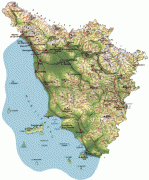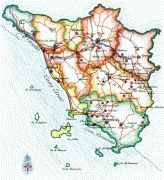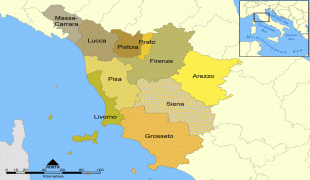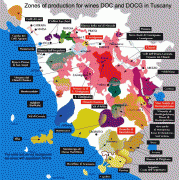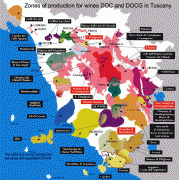Tuscany (Toscana)
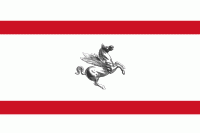 |
 |
Tuscany (Toscana ) is a region in central Italy with an area of about 23000 km2 and a population of about 3.8 million inhabitants. The regional capital is Florence (Firenze).
Tuscany is known for its landscapes, history, artistic legacy, and its influence on high culture. It is regarded as the birthplace of the Italian Renaissance and of the foundations of the Italian language. The prestige established by the Tuscan dialect's use in literature by Dante Alighieri, Petrarch, Giovanni Boccaccio, Niccolò Machiavelli and Francesco Guicciardini led to its subsequent elaboration as the language of culture throughout Italy. It has been home to many figures influential in the history of art and science, and contains well-known museums such as the Uffizi and the Palazzo Pitti. Tuscany is also known for its wines, including Chianti, Vino Nobile di Montepulciano, Morellino di Scansano, Brunello di Montalcino and white Vernaccia di San Gimignano. Having a strong linguistic and cultural identity, it is sometimes considered "a nation within a nation".
Tuscany is the second most popular Italian region for travellers in Italy, after Veneto. The main tourist spots are Florence, Castiglione della Pescaia, Pisa, San Gimignano, Lucca, Grosseto and Siena. The town of Castiglione della Pescaia is the most visited seaside destination in the region, with seaside tourism accounting for approximately 40% of tourist arrivals. The Maremma region, Siena, Lucca, the Chianti region, Versilia and Val d'Orcia are also internationally renowned and particularly popular spots among travellers.
Eight Tuscan localities have been designated World Heritage Sites: the historic Centre of Florence (1982); the Cathedral square of Pisa (1987); the historical centre of San Gimignano (1990); the historical centre of Siena (1995); the historical centre of Pienza (1996); the Val d'Orcia (2004), the Medici Villas and Gardens (2013), and Montecatini Terme as part of the Great Spa Towns of Europe (2021). Tuscany has over 120 protected nature reserves, making Tuscany and its capital Florence popular tourist destinations. In 2018, Florence alone had over 5 million arrivals, making it the world's 51st most visited city.
Roughly triangular in shape, Tuscany borders the regions of Liguria to the northwest, Emilia-Romagna to the north, Marche and Umbria to the east, and Lazio to the southeast. The comune (municipality) of Badia Tedalda, in the Tuscan Province of Arezzo, has an exclave named Ca' Raffaello within Emilia-Romagna.
Tuscany has a western coastline on the Ligurian Sea and the Tyrrhenian Sea, among which is the Tuscan Archipelago, of which the most significant island is Elba. Tuscany has an area of approximately 22993 km2. Surrounded and crossed by major mountain chains and with few (but fertile) plains, the region has a relief that is dominated by hilly country used for agriculture. Hills make up nearly two-thirds (66.5%) of the region's total area, covering 15292 km2, and mountains (of which the highest are the Apennines), a further 25%, or 5770 km2. Plains occupy 8.4% of the total area—1930 km2—mainly around the valley of the Arno. Many of Tuscany's most significant cities lie on the banks of the Arno, including the capital, Florence, Empoli, and Pisa.
The climate is fairly mild in the coastal areas, and is harsher and rainy in the interior, with considerable fluctuations in temperature between winter and summer, giving the region a soil-building active freeze-thaw cycle, in part accounting for the region once having served as a key breadbasket of ancient Rome.
Map - Tuscany (Toscana)
Map
Country - Italy
 |
 |
| Flag of Italy | |
Italy was the native place of many civilizations such as the Italic peoples and the Etruscans, while due to its central geographic location in Southern Europe and the Mediterranean, the country has also historically been home to myriad peoples and cultures, who immigrated to the peninsula throughout history. The Latins, native of central Italy, formed the Roman Kingdom in the 8th century BC, which eventually became a republic with a government of the Senate and the People. The Roman Republic initially conquered and assimilated its neighbours on the Italian peninsula, eventually expanding and conquering a large part of Europe, North Africa and Western Asia. By the first century BC, the Roman Empire emerged as the dominant power in the Mediterranean Basin and became a leading cultural, political and religious centre, inaugurating the Pax Romana, a period of more than 200 years during which Italy's law, technology, economy, art, and literature developed.
Currency / Language
| ISO | Currency | Symbol | Significant figures |
|---|---|---|---|
| EUR | Euro | € | 2 |
| ISO | Language |
|---|---|
| CA | Catalan language |
| CO | Corsican language |
| FR | French language |
| DE | German language |
| IT | Italian language |
| SC | Sardinian language |
| SL | Slovene language |






